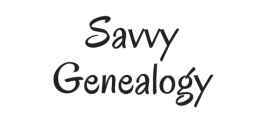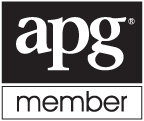How to Tell a Better Life Story for Genealogy
Have you ever thought about telling your own life story? Have you ever considered that every one of us has a story to tell? I’ve been thinking a lot about this topic this week. I was introduced to Matthew Dicks who is a storyteller, but he’s also a fifth grade teacher. He’s not professional storyteller, but he does know how to tell a great story. He tells stories all over the country and does workshops. The neat thing about him is that he tells true stories about his life and not just fairy tales or fables. This is what drew me to him at first.
I know a few professional storytellers and they’re great at telling stories, but few of them tell real stories about their lives. Few of them in my experience show the storyteller’s vulnerable side. Matthew Dicks tells about his life candidly. However, he talks about how stories should be, a way to connect with people. If you want connection, then you are going to have to be vulnerable in your stories.

Now, I’m not an expert on this topic. But I do want to tell a better life story. I want to make clear to you that telling your life story is different than writing your life story. They both use similar tools that I will be discussing here, but writing can have a more formal feel to it than storytelling. If you want to learn more about writing your life story, then I recommend these two books that I’ve used in the past. The first is called, “The Story Only You Can Tell” by Toni Sorenson and the second is “Writing Life Stories” by Bill Roorbach. In addition, you can check out books from your local library on the subject or Google it and it will bring up many useful articles.
Genealogy and Storytelling
So what does this have to do with genealogy? Everything! Isn’t genealogy creating our ancestor’s life story? It may just be gathering dates, but it could also be writing their personal history. In either case, we come to know our ancestor through collecting their life story. So after we gather that story, then how do we tell it? How do we tell entertaining stories about our ancestors?
In addition, isn’t telling your own life story a facet of genealogy? Do you want to tell better stories about your life to your children or grandchildren? We all have those family stories that get told over and over again through the generations. Now let’s make those stories better!
Life Story Tip #1
Homework for life is Matthew’s first tip to gathering content for your audience. Every writer or storyteller needs something to write about, right? So as an everyday exercise you ask yourself one question. “If I had to tell a story from today-a five minute story onstage about something that took place over the course of this day-what would it be? It doesn’t matter if it’s benign or boring or inconsequential. It matters that it happened today. What would you write down?”

Now he says you have to write it down. Your brain will work it’s creative writing muscle as you write one sentence about your day everyday. That’s it! You don’t need to write more than one or two sentences about the moment in your day. It’s just enough of a snippet to recall that moment later on. I haven’t tried this exercise yet, but I’m excited and nervous about it at the same time.
Tip #2
Now that you have gathered your material that you want to talk about, it’s time to organize and craft it into a story that people want to hear. It’s called crafting your story. Most of the interesting stories happen around a five-second moment of change. Your perspective shifts in some way that brings you clarity. You’re changed in some way that takes you down a different path. This is the end of your story. The beginning of your story is the exact opposite of that change. It looks something like this, “I was once this, but now I’m this.” or “My ancestor once thought or felt this, but now they think or feel this.” That’s the beginning and end of your story.
This is the natural arc that a good story has. It’s the same for every movie and book that you read as well. They either start out with a good moment or a bad moment and have the opposite moment by the end. Every story needs that arc. This is what moves your audience with emotion as you tell the story. Therefore, the beginning of your story is just as important as the end. It’s not always going to be easy to find, but that’s OK. Just keep trying.
Tip #3
Once you have your story from beginning to end, then it’s time to tell it to an audience. This could be your family around the dinner table or at a stand up mic place in your local cafe. I’m not that brave yet so the dinner table is my setting of choice. Matthew talks about when you’re telling a story onstage you want to tell it like you’re at the dinner table. Some people gesture with their hands while onstage. He says most people don’t do that when talking at the dinner table. Other people use theatrical voices when onstage, while Matthew again says most people don’t do that at the dinner table. So he uses the dinner table idea to help you tell your story authentically and naturally.

Matthew also talks about telling stories in present tense to bring your audience with you into the story. If you’ve ever read a book that talks in present tense, then you know what I mean. Present tense is in the moment. The listener feels like they are part of the story while listening to it. Practice telling your stories from the present tense to see if your audience responds to it or not.
Conclusion
These tips are just the “tip of the iceberg” when it comes to telling a good story. These tips also work for telling our ancestor’s stories. That’s what I find so fascinating about this way of storytelling. I’m excited to put some of these things into practice because we all have stories to tell. What stories do you have to tell your family today or this week? Try it and see!
Good luck and happy hunting
Tiffany
P.S Have you signed up for my weekly email yet? New subscribers get a free download of my websites that I use in my genealogy business. Regular subscribers get weekly access to current tips and tricks of the trade. Matthew’s book, Storyworthy, can be found on Amazon. He also has a website, http://www.matthewdicks.com/ if you want to learn more.





